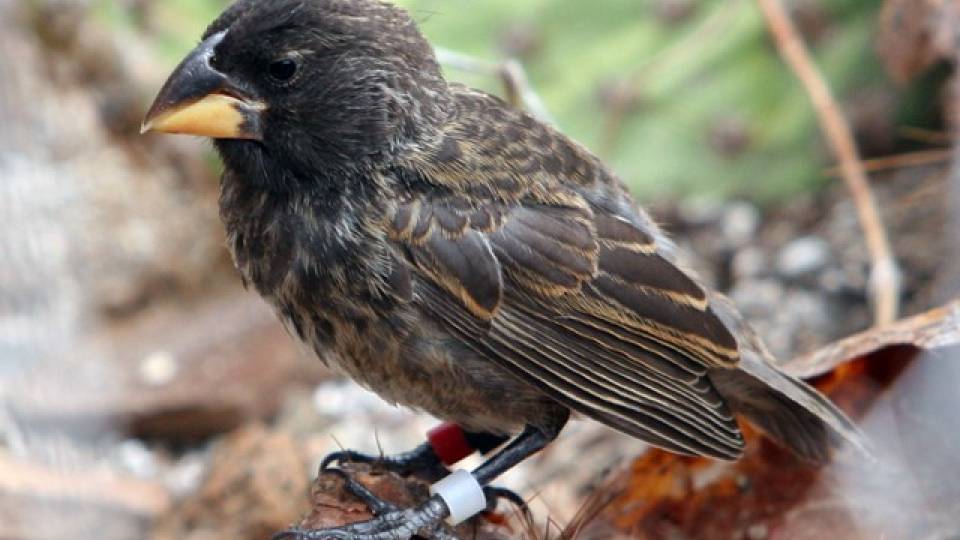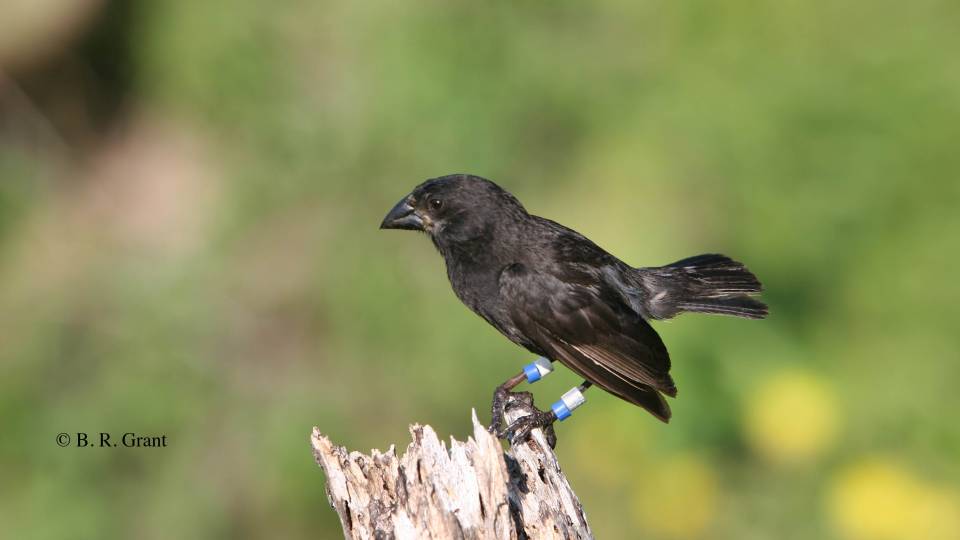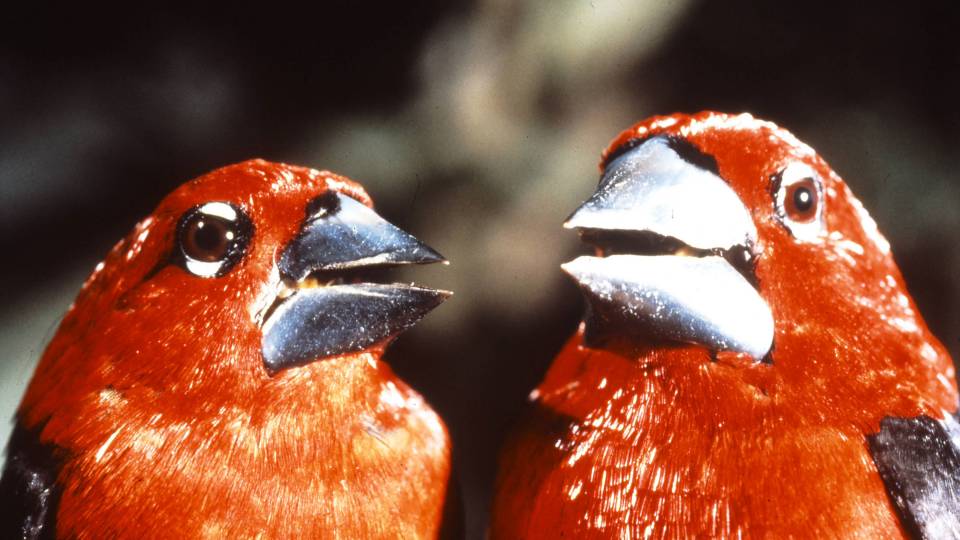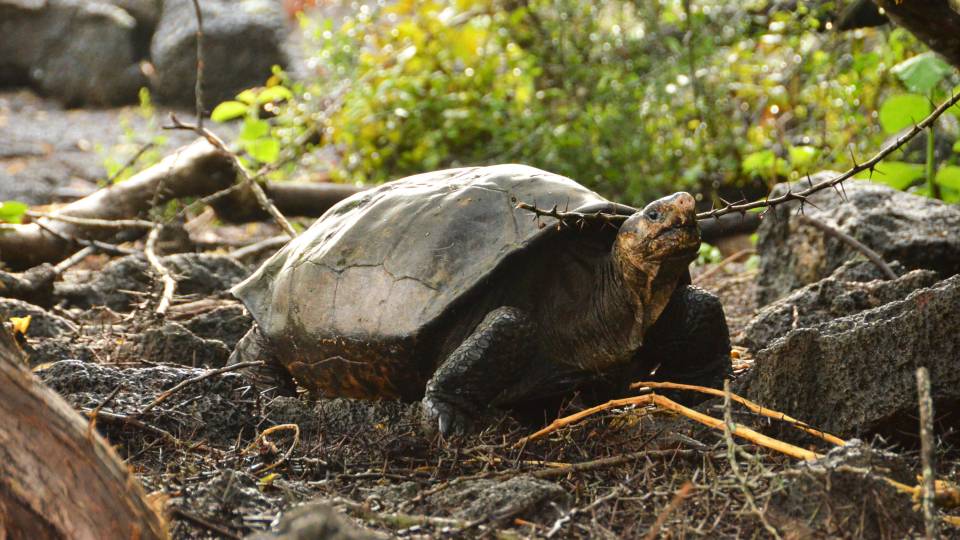Researchers from Princeton University and Uppsala University in Sweden have identified a gene in the Galápagos finches studied by English naturalist Charles Darwin that influences beak shape and that played a role in the birds' evolution from a common ancestor more than 1 million years ago.
The study illustrates the genetic foundation of evolution, including how genes can flow from one species to another, and how different versions of a gene within a species can contribute to the formation of entirely new species, the researchers report in the journal Nature. The study was published online Feb. 11, one day before the birthday of Darwin, who studied the finches during the 1835 voyage that would lead him to publish the seminal work on evolution, "On the Origin of Species," in 1859.
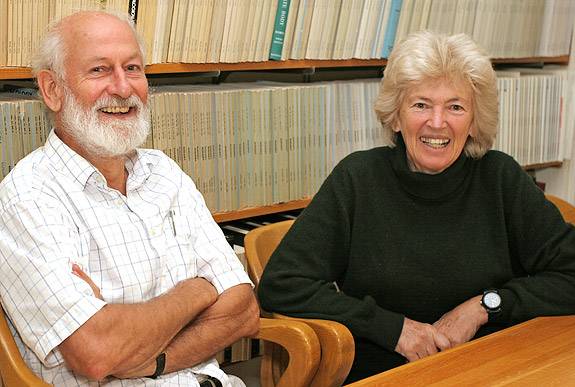
New research from Princeton University and Uppsala University in Sweden reveals a gene associated with beak shape in Darwin's finches in the Galápagos islands. Evolutionary biologists Peter and Rosemary Grant (above) provided DNA samples collected during 40 years of field work on the islands. The team in Uppsala led by Leif Andersson provided the whole-genome sequencing that resulted in detection of the gene. The findings illustrate several aspects of the genetic foundation of evolution. (Photo by Denise Applewhite, Office of Communications)
"We now know more about the genetic basis for our evolutionary studies, and this is a highly satisfactory, very exciting discovery after all these years," said Peter Grant, Princeton's Class of 1877 Professor of Zoology, Emeritus, and a professor of ecology and evolutionary biology, emeritus. Along with co-author and wife B. Rosemary Grant, a senior biologist in ecology and evolutionary biology, Grant has studied the finches for 40 years on the arid, rocky islands of Daphne Major and Genovesa in the Galápagos archipelago.
The latest study reveals how evolution occurs in halting and disordered steps, with many opportunities for genes to spread in different species and create new lineages. Given the right conditions, such as isolation from the original population and an accumulation of genetic differences, these lineages can eventually evolve into entirely new species.
Working with DNA samples collected by the Grants, researchers at Uppsala identified the gene that influences beak shape by comparing the genomes of 120 birds, all members of the 15 species known as "Darwin's finches." They spotted a stretch of DNA that looked different in species with blunt beaks, such as the large ground finch (Geospiza magnirostris), versus species with pointed beaks, such as the large cactus finch (G. conirostris).
Within that stretch of DNA, the researchers found a gene known as ALX1, which has previously been identified in humans and mice as being associated with the formation of facial features. Mutations that inactivate this gene cause severe birth defects in humans.
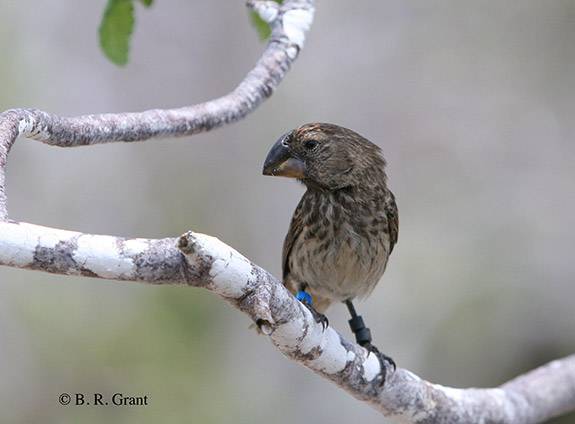
The large ground finch (Geospiza magnirostris) on Daphne Major Island, Galápagos archipelago. (Photo B.R. Grant, Department of Ecology and Evolutionary Biology. Reproduced with the permission of Princeton University Press
"This is an interesting example where mild mutations in a gene that is critical for normal development leads to phenotypic [observable] evolution," said lead researcher Leif Andersson, a professor of functional genomics at Uppsala University, the Swedish University of Agricultural Sciences, and Texas A&M University.
But the most exciting and interesting finding of the study, Andersson said, was that the gene also varied among individuals from the same species. For example, the medium ground finch (G. fortis) species includes some birds with blunt beaks and others with pointed ones.
This finding is significant because it shows how evolution can happen, Peter Grant said. Within a species, when some individuals have a trait that aids their survival — such as a blunt beak that allows them to crack open tough seed coverings — they will pass on the genes for that trait to their offspring, whereas individuals with pointed beaks will have died. "This is the genetic variation upon which natural selection can work," he said.
The shape and size of the beak are crucial for finch survival on the islands, which periodically experience extreme droughts, El Niño-driven rains and volcanic activity. The birds use their beaks as tools to crack open the hard and woody outer coverings of seeds, pry insects from twigs, and sip nectar from cactus flowers. In times of drought, a bird that can extract food from multiple sources will survive whereas other birds will not.
During the past four decades, the Grants and their research team have found that beak shape and size played a significant role in the evolution of finch species via natural selection when droughts hit Daphne Major in 1977, 1985 and 2004. "Now we have a genetic underpinning of something we have seen three times during the last 40 years," Rosemary Grant said.
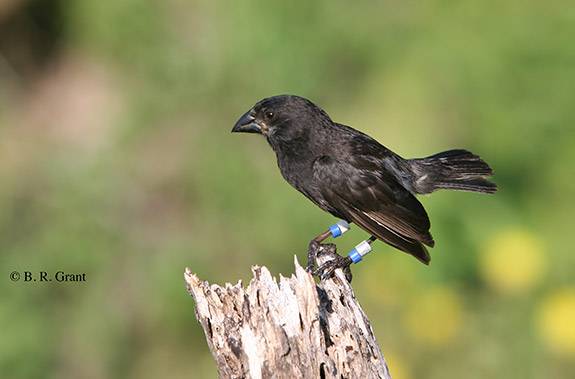
The medium ground finch (Geospiza fortis) on Daphne Major Island, Galápagos archipelago. (Photo B.R. Grant, Department of Ecology and Evolutionary Biology. Reproduced with the permission of Princeton University Press)
The Nature study also adds to what is known about how genes are transferred from one species to another when individuals from two closely related species mate. Although in many species of birds the resulting chicks would be sterile, the hybrid offspring of Galápagos finches can mate with an individual from either of the two parental species. The resulting chicks will identify with one or the other of the parent species through song and appearance, but they will carry genes from both parents.
Through this process, known as gene flow, or introgression, genetic material can move between species and contribute to the development of new species. The Grants had shown that gene flow has occurred in the finches of Daphne Major during the past 40 years, but the new study found extensive evidence for gene flow throughout the roughly 1 million years that the birds have occupied the archipelago, which has helped the researchers update their understanding of how the lineages diverged over time.
"We've been able to get a much more confident estimate," Peter Grant said, "of which species are old and which are young, and the time course over which evolution happened."
The article, "Evolution of Darwin’s finches and their beaks revealed by genome sequencing," was published online Feb. 11 by Nature. The study was supported by the Knut and Alice Wallenberg Foundation, Uppsala University and Hospital, SciLifeLab and Swedish Research Council. The collection of samples was funded by the National Science Foundation under permits from the Galápagos and Costa Rica National Parks Services.
